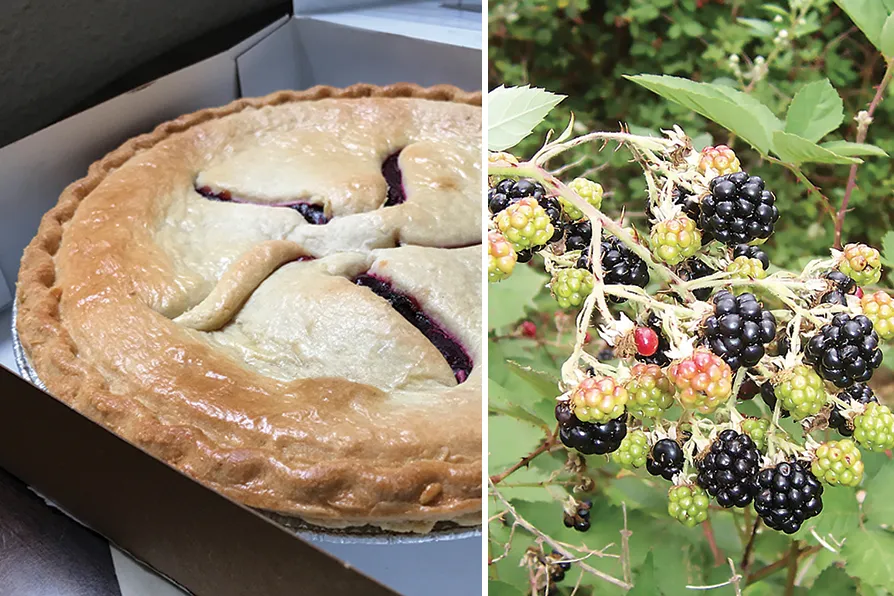SOLOMON HUGHES finds the government went along with a US scheme to distract from Israel’s lethal Gaza blockade with an impractical floating pier scheme – though its own officials knew it wouldn’t work
MAT COWARD advocates cultivating blackberries, a growing in popularity crop for gardens and allotments

 Blackberry pie and bush / Pics: (L to R) Steven Pavlov/CC; Pic: Fir0002/CC
Blackberry pie and bush / Pics: (L to R) Steven Pavlov/CC; Pic: Fir0002/CC
THERE was a time when hardly anyone grew blackberries because they were available free in the wild. But the old blackberrying sites are increasingly disappearing under concrete, in town and country, so this is becoming a more popular crop for gardens and allotments.
Cultivated blackberries have other advantages over their free-range cousins. Many types are thornless, which makes them a lot easier to deal with when pruning or harvesting.
There are cultivars which have been bred to be compact and self-supporting, suitable for growing in large pots, rather than the open ground. You can choose from a range of fruit sizes, sweetness and cropping dates. There’s even a choice of white or pink flowers.
November, before the frosts start, is a great time to plant a new blackberry. The soil should still retain some warmth from summer, and be moist from autumn rain.
If possible, pick a spot in full sun, with fertile soil that isn’t prone to waterlogging. Blackberries will grow in partial shade, and poor soil can be enriched with lots of compost or manure, but the better the position the better and more plentiful the berries will be.
Good drainage, as with most garden plants, is non-negotiable.
The amount of space the bush will take up depends on which cultivar you’ve bought. It can be anything from 6ft to 15ft (1.8m to 4.5m). If you’re growing it in a container, you’ll need one that’s at least 18in (45cm) in both width and depth.
Put the pot in a sunny place, sheltered from strong winds, and use a high-quality potting compost. Potted blackberries do need a lot of watering and regular feeding.
Most cultivars need supporting on wires which are attached to a wall, a fence or a series of stakes, so that’s one more thing to think about when you’re choosing where to plant. You’ll need to get the support system in place before you put the bushes in the earth (I speak from shamefaced experience).
During the growing season you’ll be tying the canes, or stems, of the blackberry to the wires to keep them from flopping around on the ground.
Garden centres and websites sell the strong galvanised wire that you’ll need, and the vine eyes which will attach it to the wall or stake. The wires are set up horizontally, the lowest about 18in (45cm) off the ground. The vine eyes should also be 18in apart.
As for what you’re fixing the vine eyes into — well, walls are obviously favourite because they’re already there. The 4x4 inch wooden posts most of us end up using are a bit more bother, but they’ll do the job. Buy ones that have been treated to stop them rotting in the soil, 8ft (2.5m) long, and drive them 30in (76cm) into the earth.
The upside of all this work is that, because the canes grow upwards, you’re getting a lot of growing space per square foot of ground.










